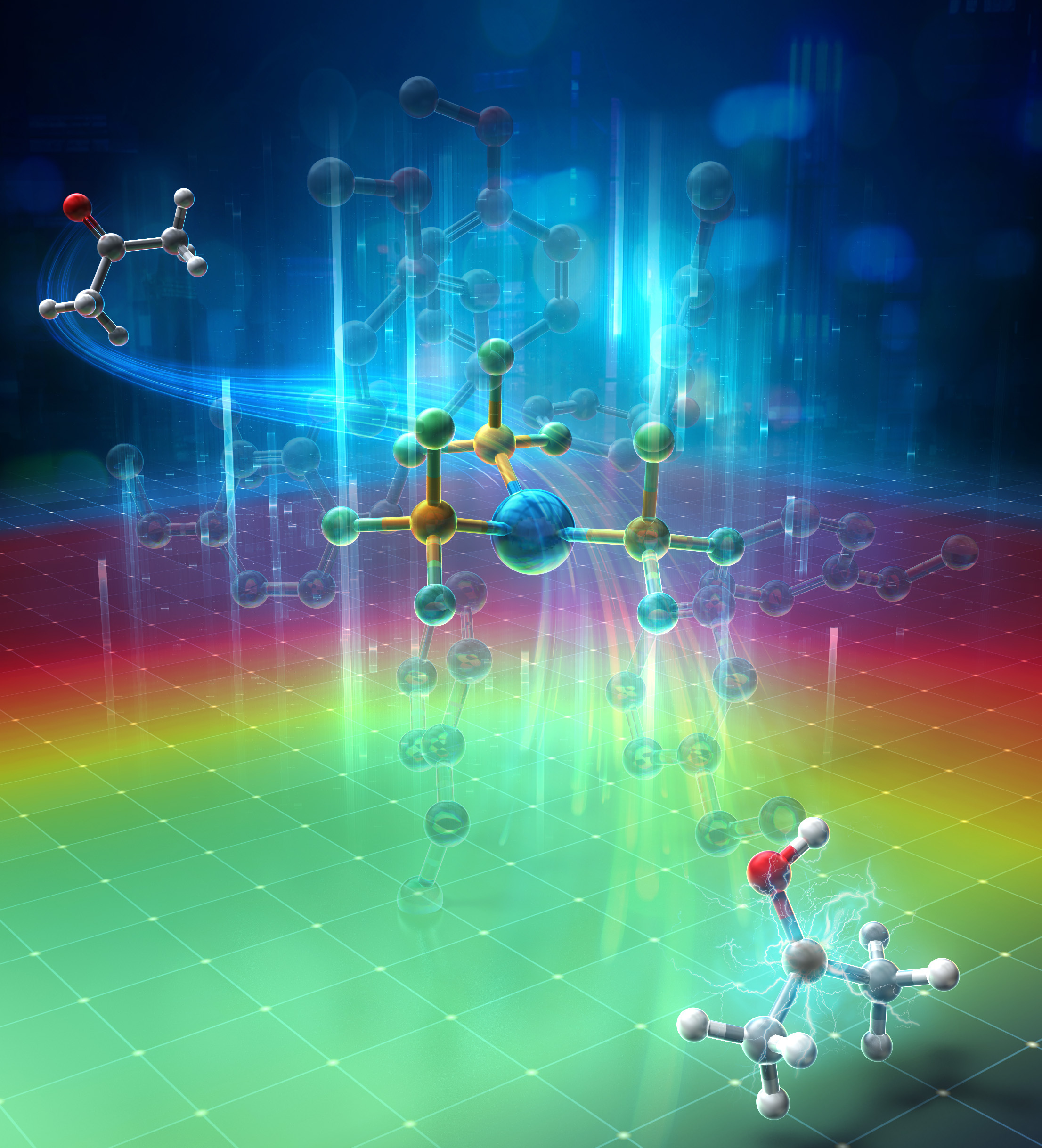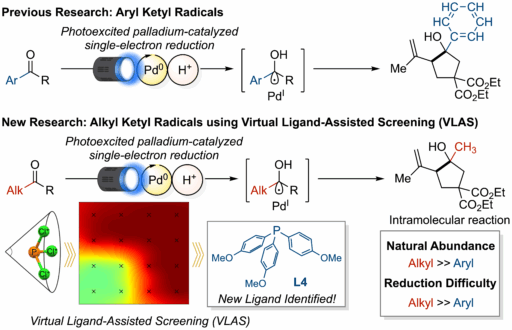Computational method accurately predicts the optimal ligand for a photochemical palladium catalyst that enables new alkyl ketone radical reactions.

Because ketones are widespread in organic molecules, chemists are eager to develop new reactions that use them to form chemical bonds. One challenging reaction is the one-electron reduction of ketones to generate ketyl radicals. Ketyl radicals are reactive intermediates used in natural product synthesis and pharmaceutical chemistry; however, most methodologies are optimized for aryl ketones while simple alkyl ketones remain challenging for chemists. Alkyl ketones are considerably more abundant but intrinsically more difficult to reduce than aryl ketones. To this end, a team of specialized organic chemists and computational chemists from WPI-ICReDD at Hokkaido University has developed a new catalytic method for generating alkyl ketyl radicals. This research was published in the Journal of the American Chemical Society on October 20, 2025, and is available open access.
WPI-ICReDD researchers have previously demonstrated a palladium catalyst with phosphine ligands that could transform aryl ketones photochemically (reaction activated by shining light) but was ineffective with alkyl ketones. Their data suggested that alkyl ketyl radicals would form, however, the ketyl radical would transfer an electron back to the palladium, i.e. back electron transfer (BET), before a ketyl radical reaction could occur. This resulted in no changes to the starting material.
Just like in conventional palladium catalysis, the reactivity of photoexcited palladium catalysts depends greatly on the type of phosphine ligand used. Therefore, the team hypothesized they could identify an appropriate phosphine ligand capable of engendering reactivity towards alkyl ketones. However, since thousands of phosphine ligands are known, identifying the optimal one for an unknown reaction through experimentation alone would be difficult, time-consuming, and environmentally burdensome due to chemical waste.
The researchers effectively circumvented these issues utilizing computational chemistry to efficiently search for optimal ligands with minimal experiments. Specifically, they employed the Virtual Ligand-Assisted Screening (VLAS) method developed by Associate Professor Wataru Matsuoka and Professor Satoshi Maeda from WPI-ICReDD. For 38 different phosphine ligands, the VLAS generated a heat map that predicted which ligands could best engender reactivity based on their electronics and sterics.
Based on this heat map, the team selected just three promising ligands for experimental testing and successfully identified L4 as the optimal ligand-tris(4-methoxyphenyl)phosphine (P(p-OMe-C₆H₄)₃). Using this ligand effectively suppressed BET, enabling the generation of ketyl radicals from alkyl ketones and achieves versatile reactions with high yield.
This work provides chemists with facile access to alkyl ketyl radical reactivity and highlights the effectiveness of VLAS to rapidly develop and optimize new chemical reactions.


Original article:
Kosaku Tanaka, III, et al. Virtual Ligand-Assisted Screening for the Generation of Ketyl Radicals from Alkyl Ketones via Photoexcited Palladium Catalysis. Journal of the American Chemical Society. October 20, 2025.
DOI: 10.1021/jacs.5c13115
Funding:
This work was financially supported by JST-ERATO (JPMJER1903), JSPS-WPI, Grants-in-Aid for Scientific Research (B) (22H02069), (C) (25K08651), Challenging Research (Exploratory) (25K22249), Transformative Research Areas (A) Digitalization-driven Transformative Organic Synthesis (Digi-TOS) (24H01045), Green Catalysis Science for Renovating Transformation of Carbon-Based Resources (Green Catalysis Science) (24H01830), and Integrated Science of Synthesis by Chemical Structure Reprogramming (SReP) (25H01995). The K.T.III gratefully acknowledge the Nippon Shokubai Award in Synthetic Organic Chemistry, Japan, and the Regional R&D Proposal-Based Program from the Northern Advancement Center for Science & Technology of Hokkaido, Japan.






